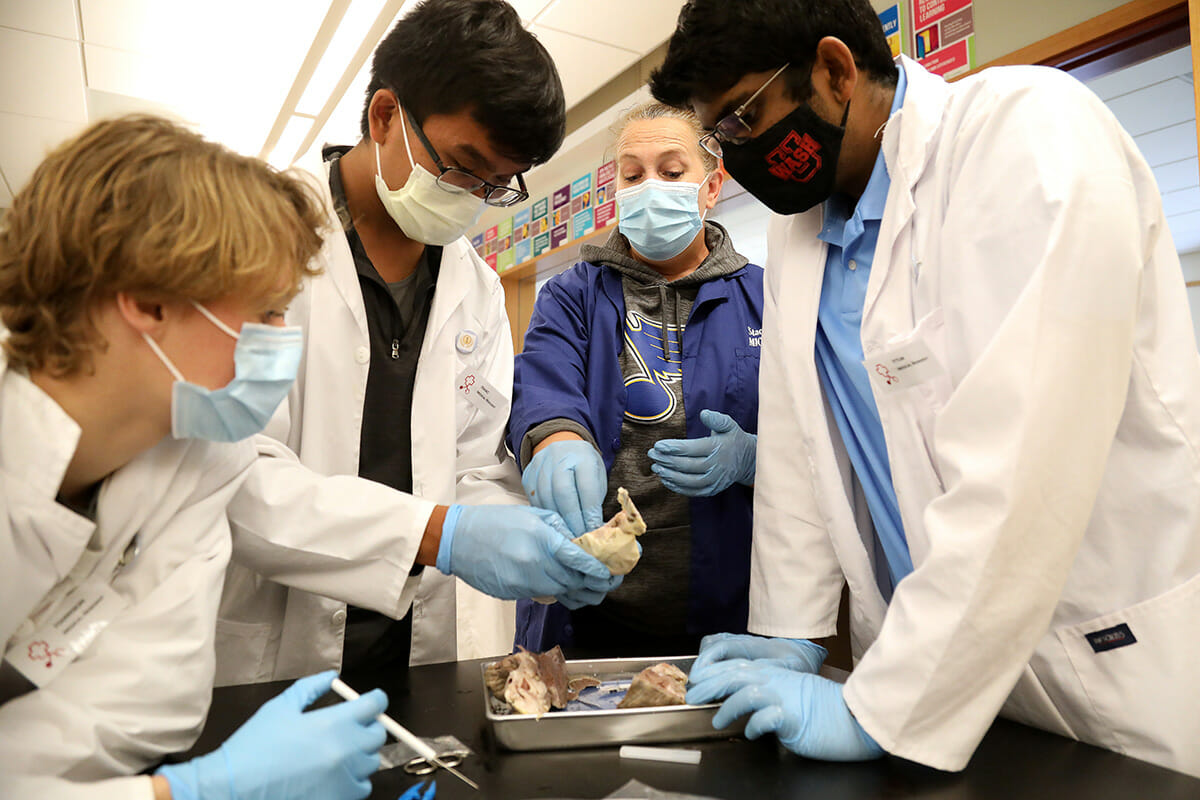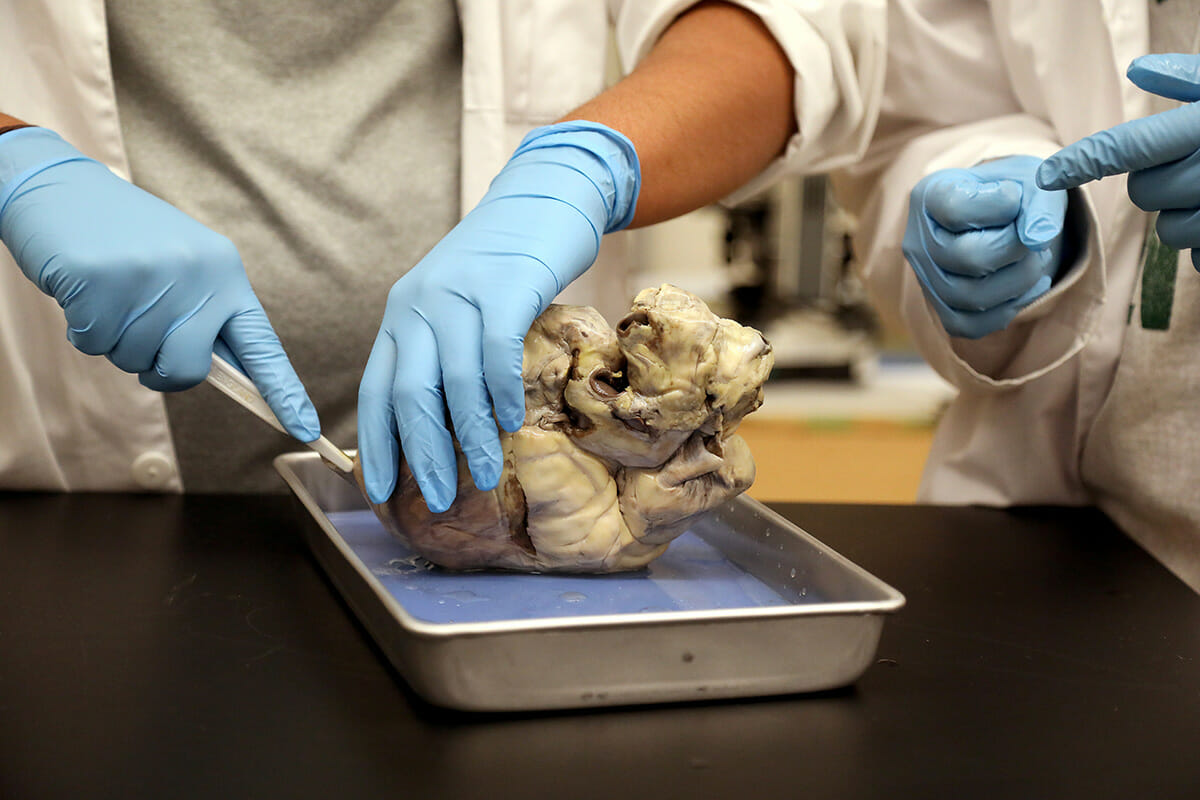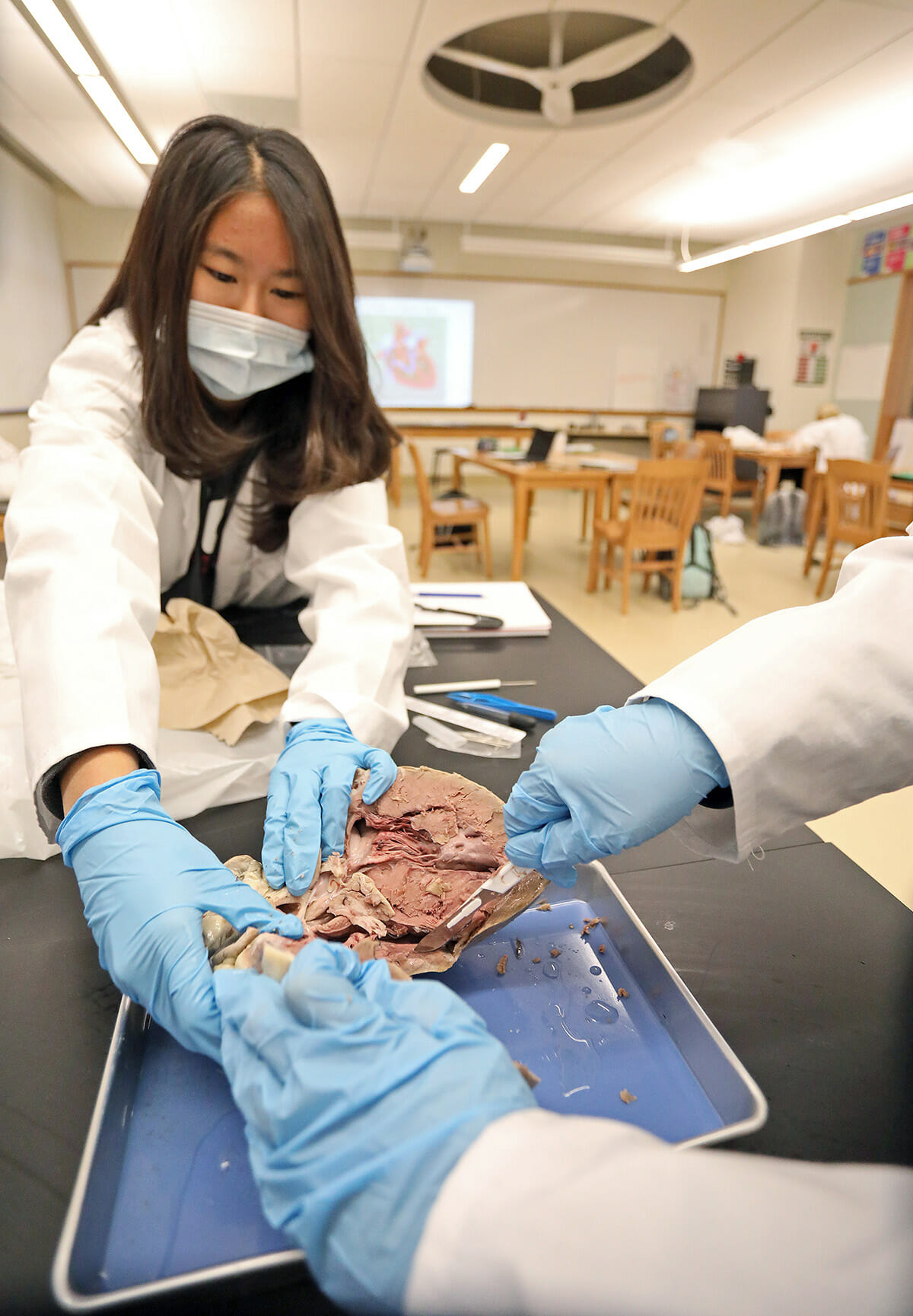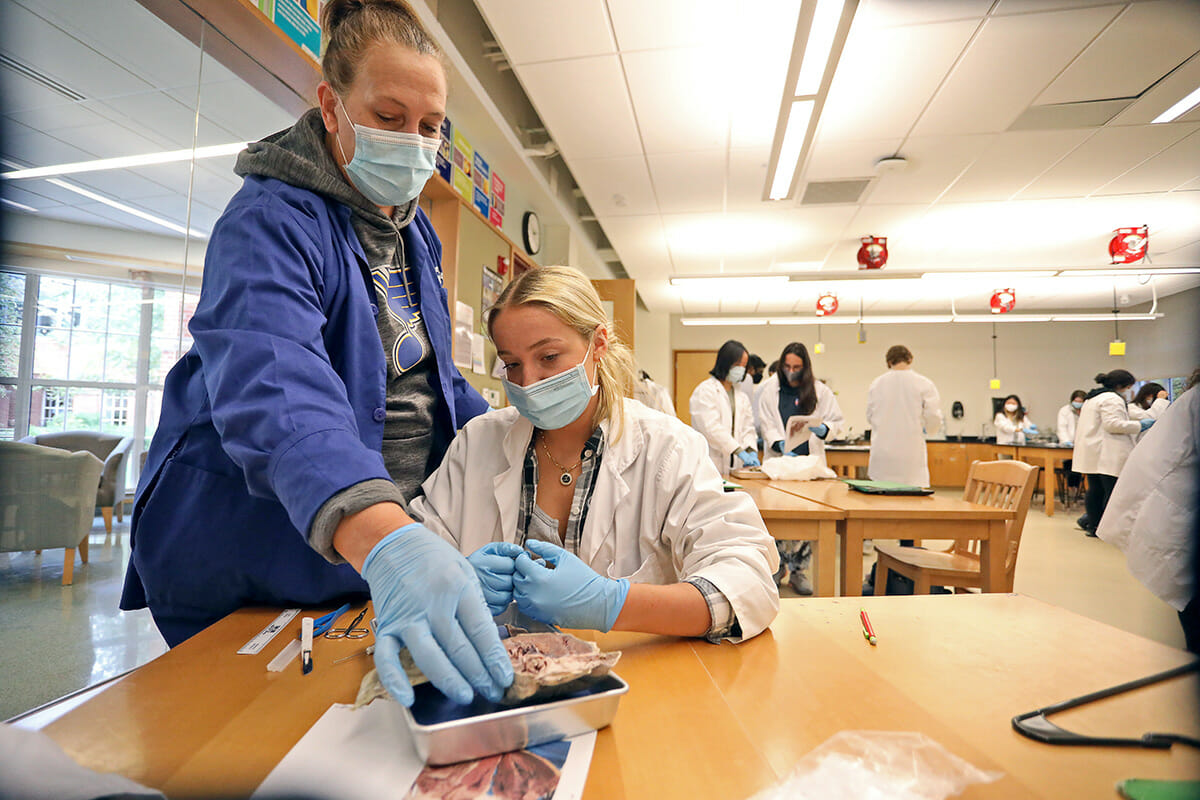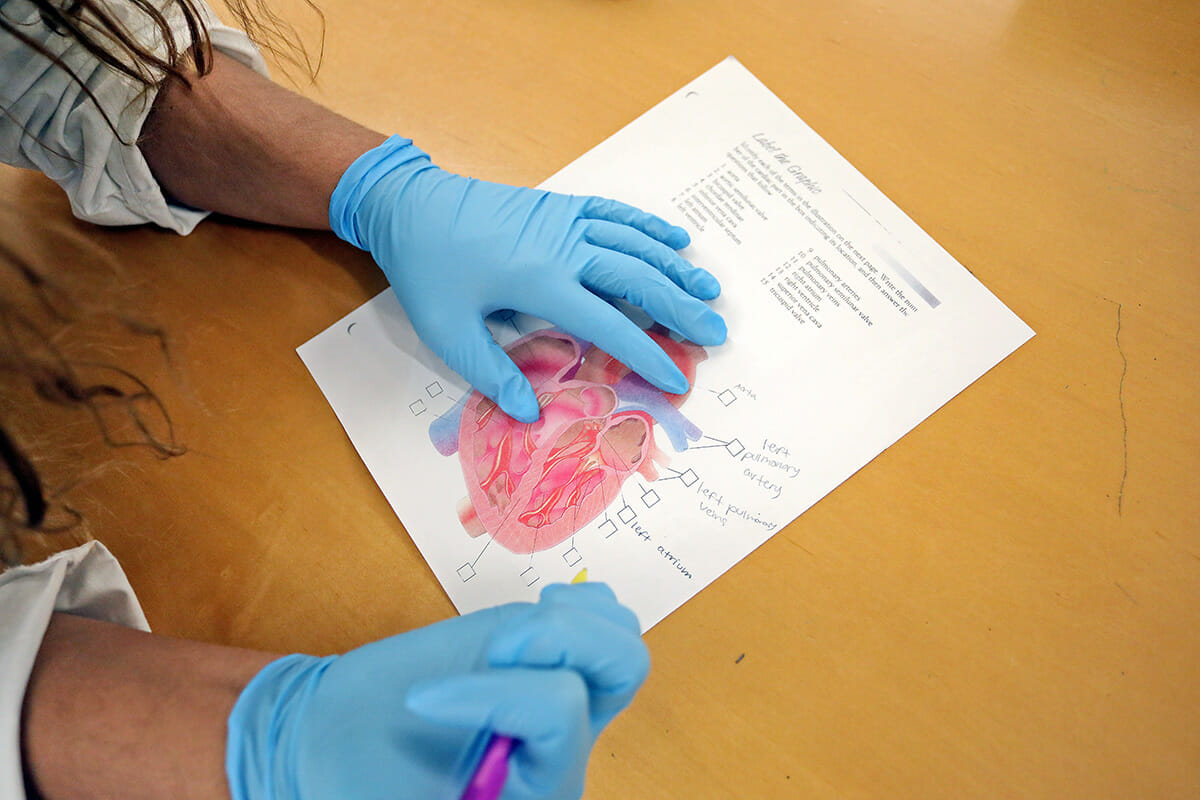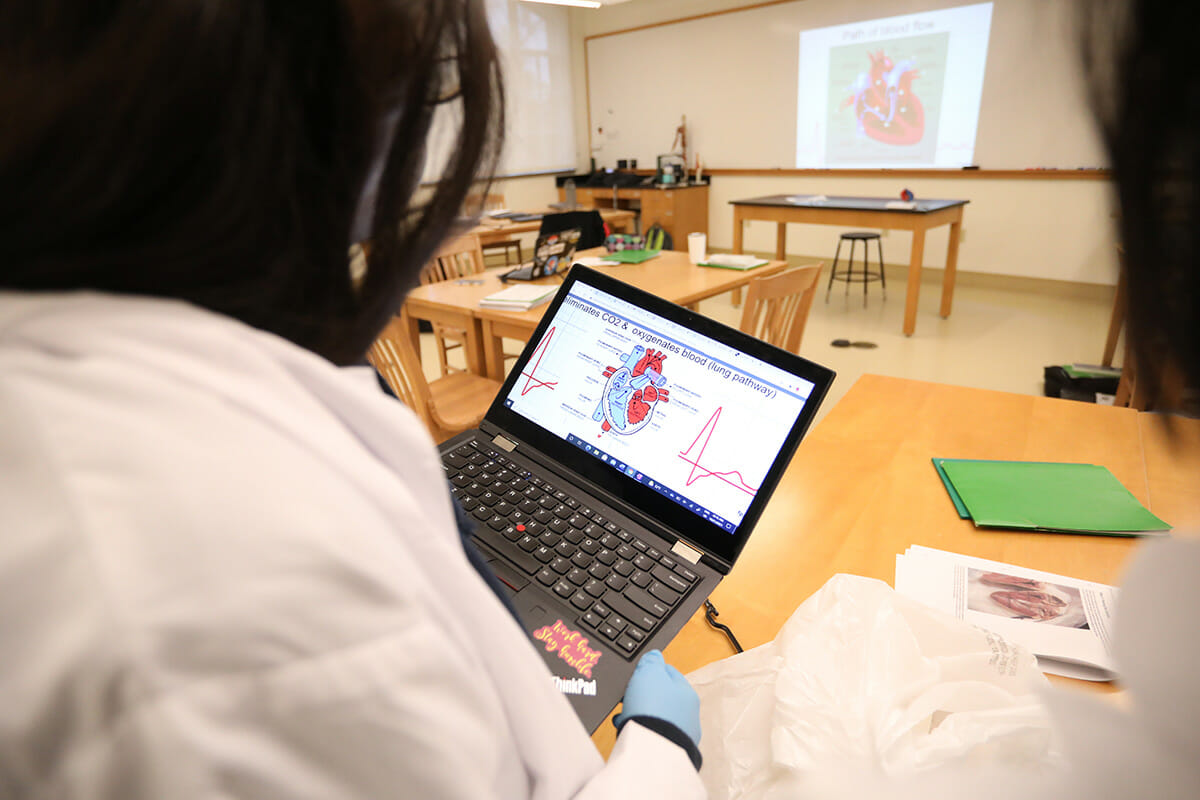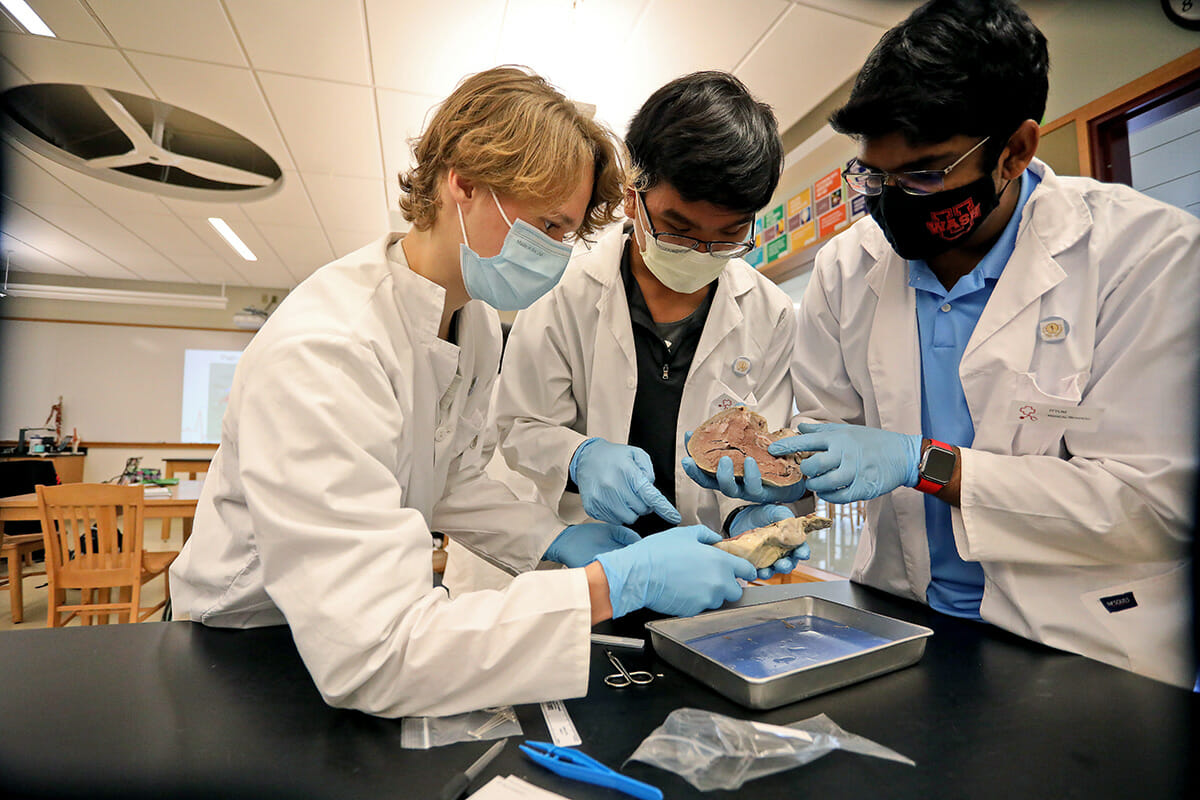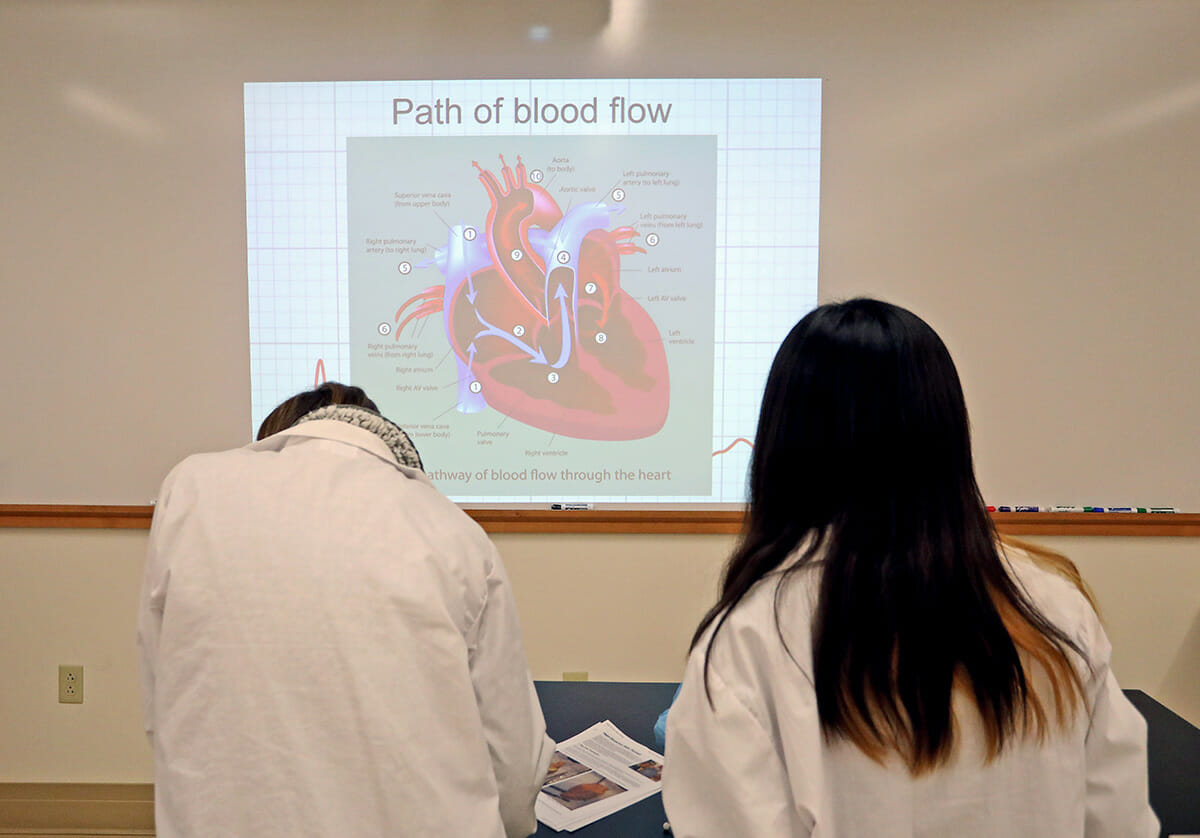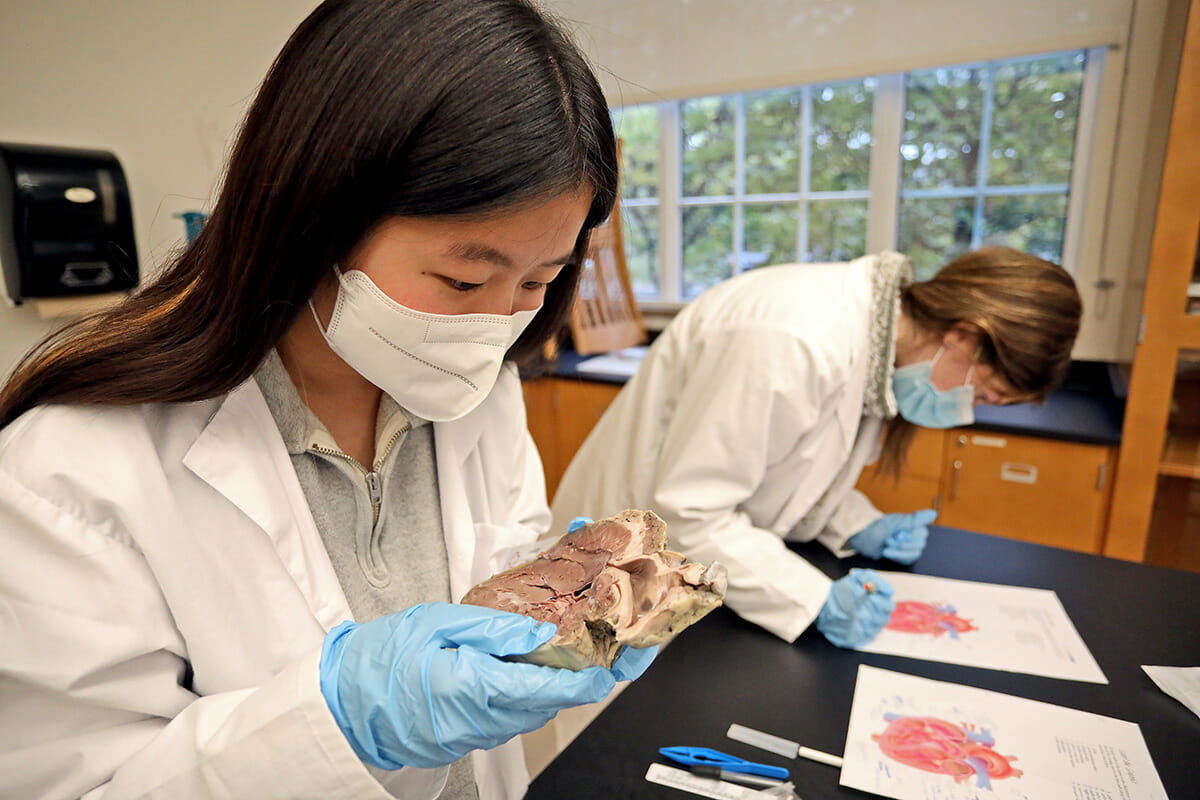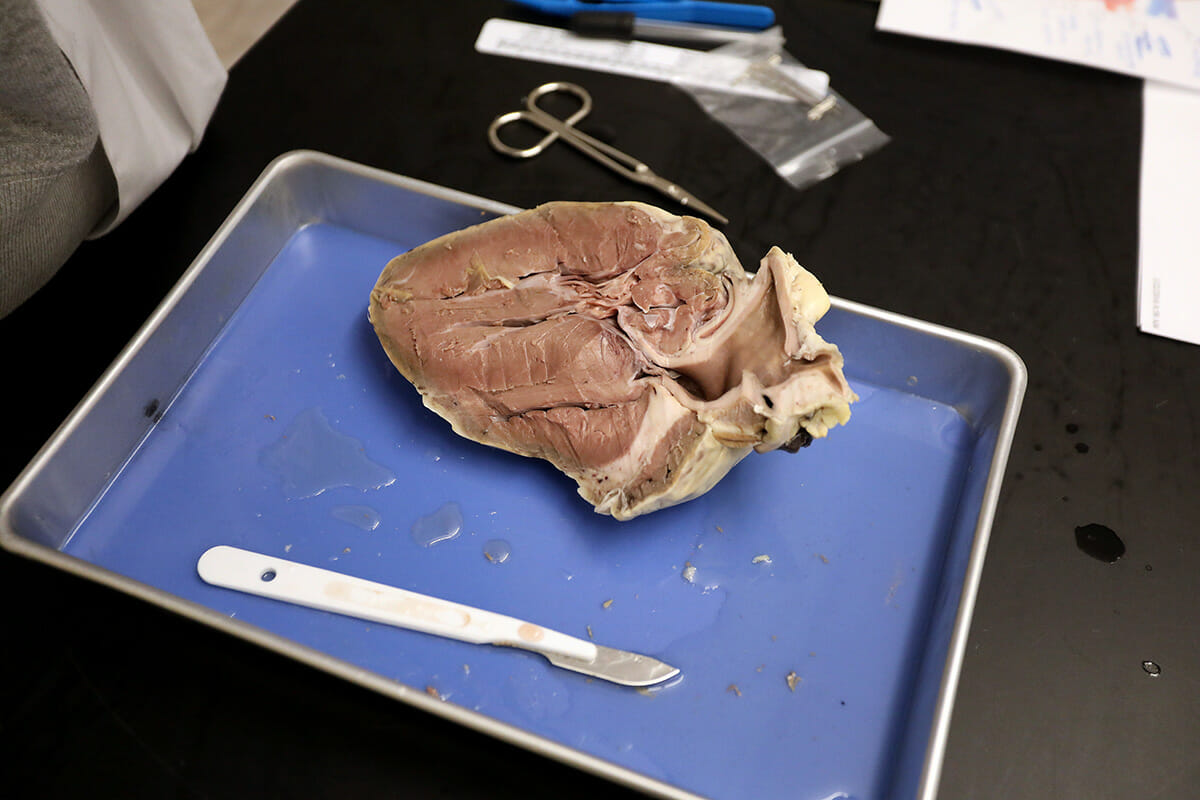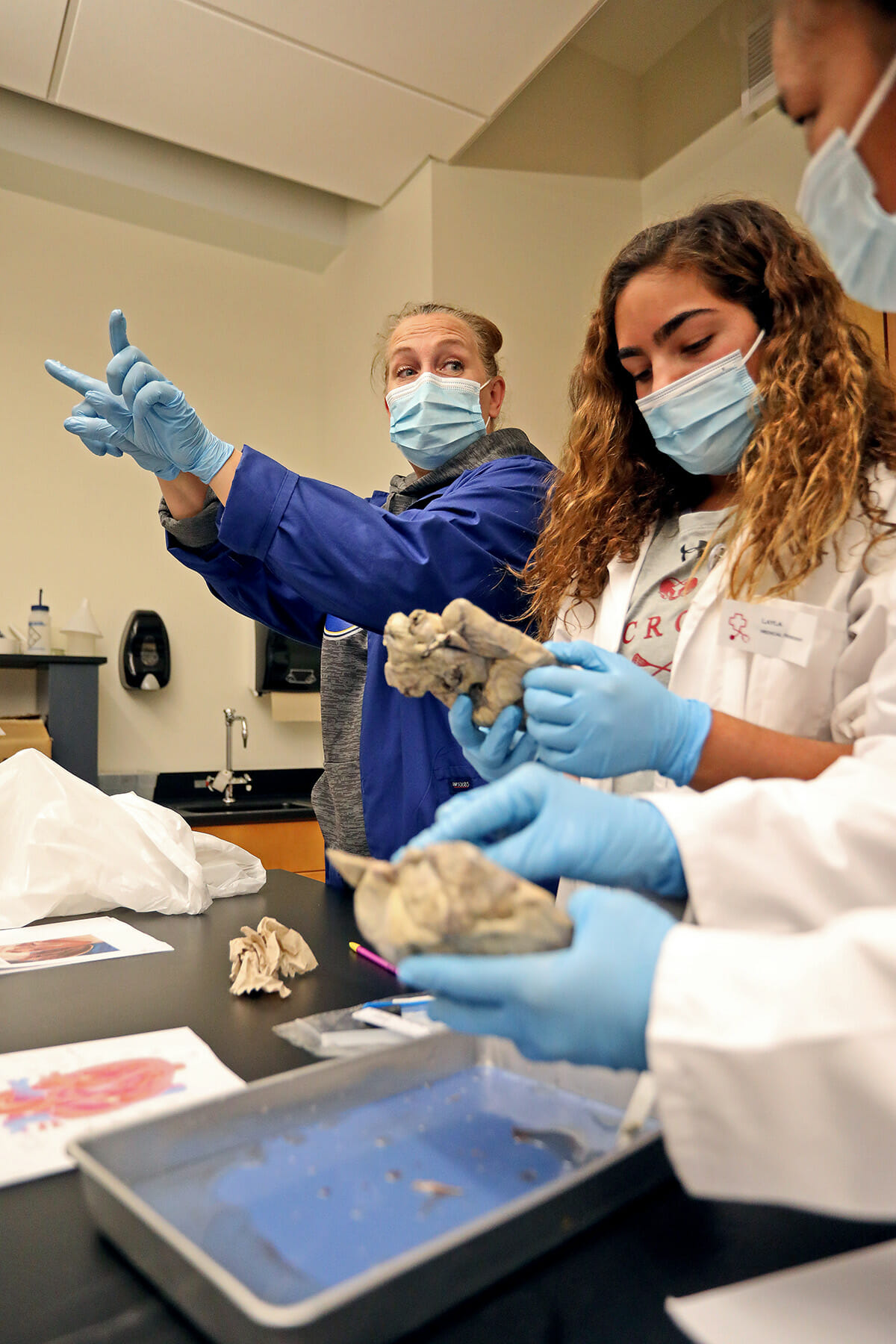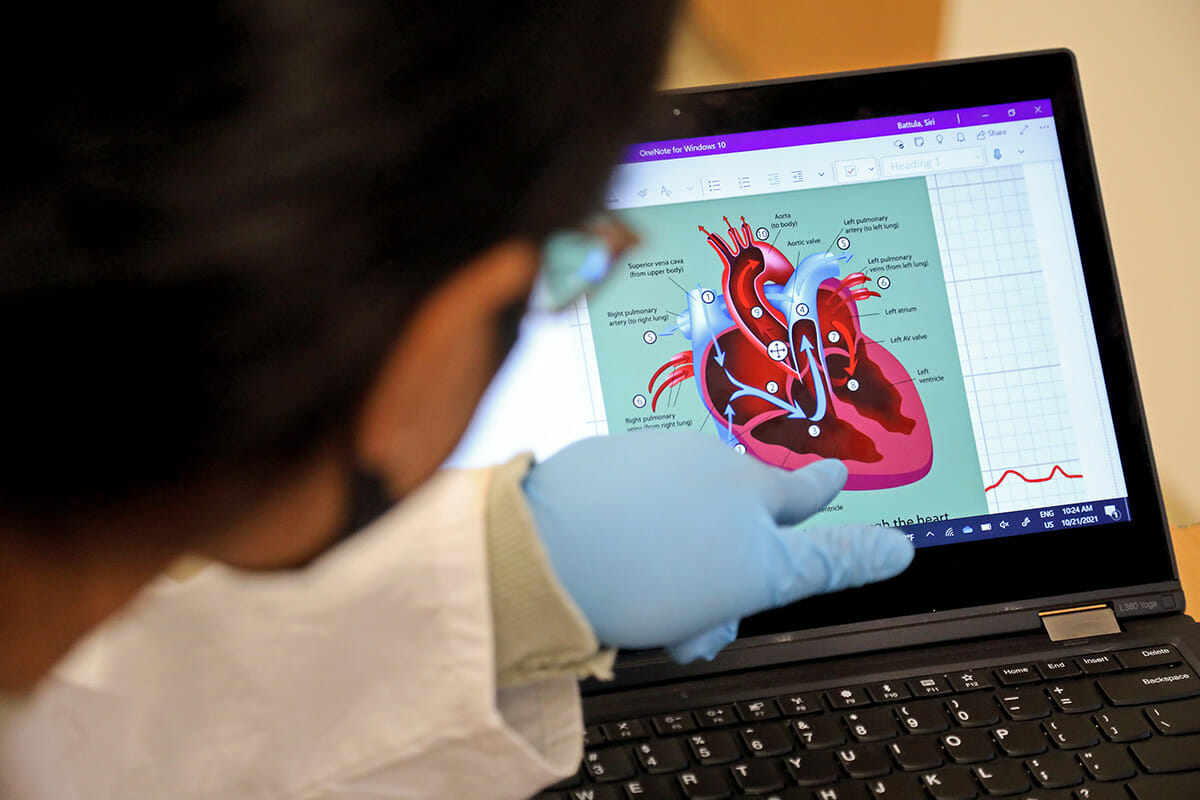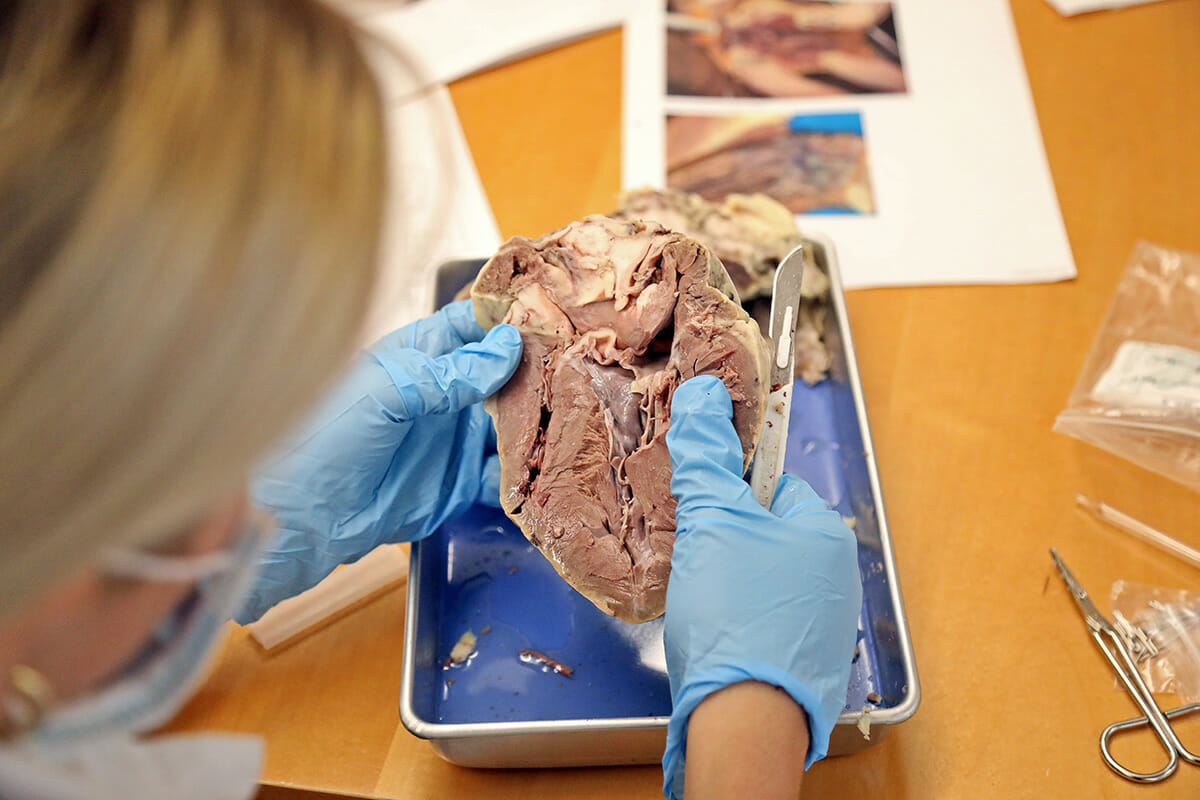Students in Upper School Science Teacher Stacey Morgan’s Anatomy and Physiology class have been studying the human heart. They learned about the valves, aorta, ventricles, and veins. They have studied how the heart functions as it pumps blood throughout the body, sending oxygen and nutrients and carrying away unwanted carbon dioxide and waste products.
There’s only so much you can learn from a book, though, and even plastic models, while realistic, aren’t as good as the original. It’s not possible to bring human hearts into the lab to study, so Morgan found the next best thing: pig hearts. “I think it’s important for the students to see and feel tissues, as that can help them better understand why and how they function the way they do,” she said.
Pig hearts are a great way to get an idea of the anatomy of human hearts because they are very similar in size, structure, and function. Like human hearts, pig hearts consist of four chambers (two atriums and two ventricles). They also have four valves and an aorta, just like humans.
During the 30-minute dissection, students are able to identify the different parts of the heart and trace the path of blood flow. They can note any questions that arise, since Morgan has arranged for a cardiothoracic surgeon to virtually visit MICDS as part of her medical speaker series.
What a great hands-on experience for our student scientists…there’s “sow” much to learn!
